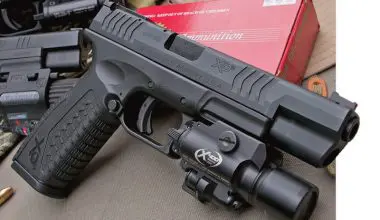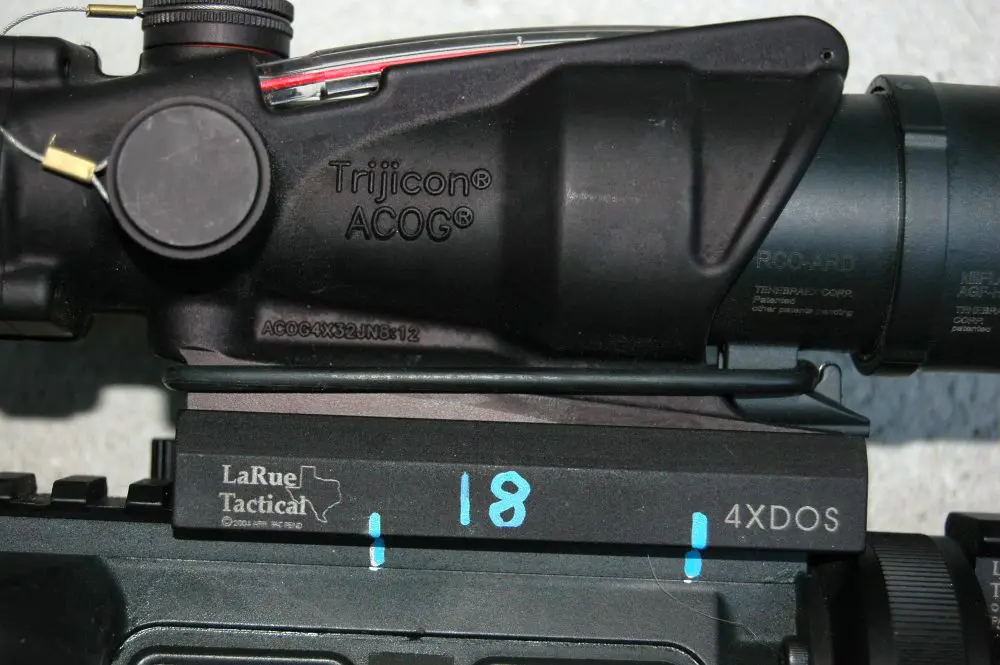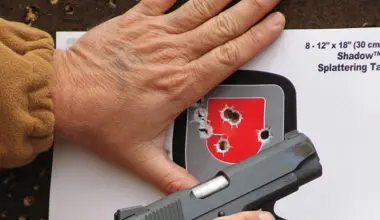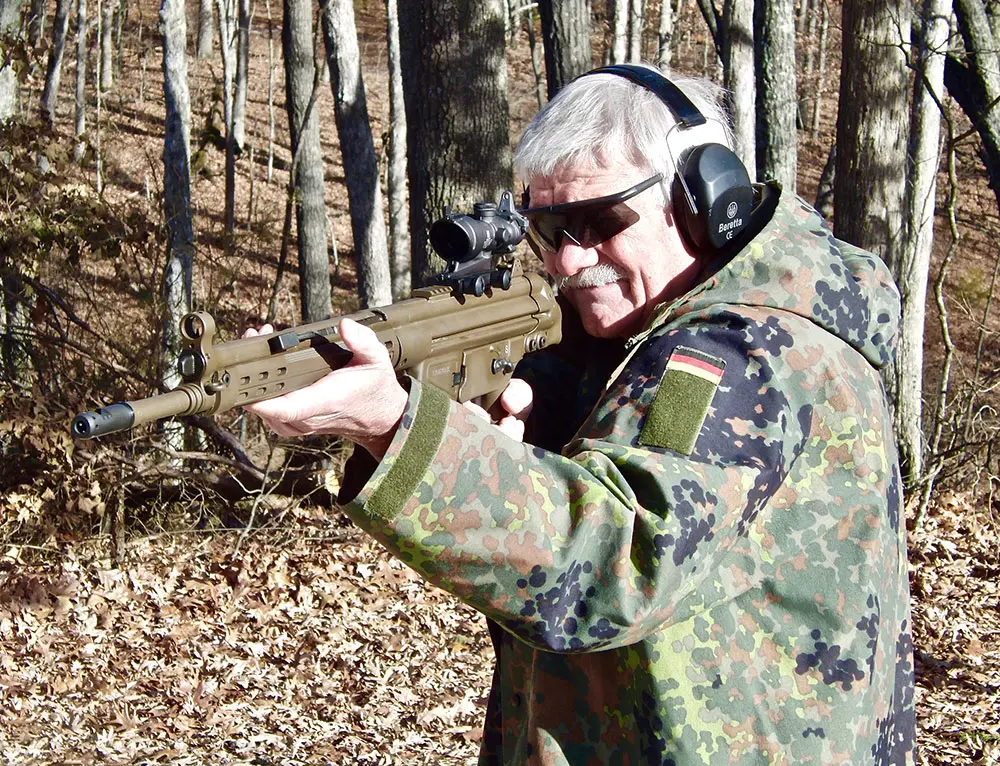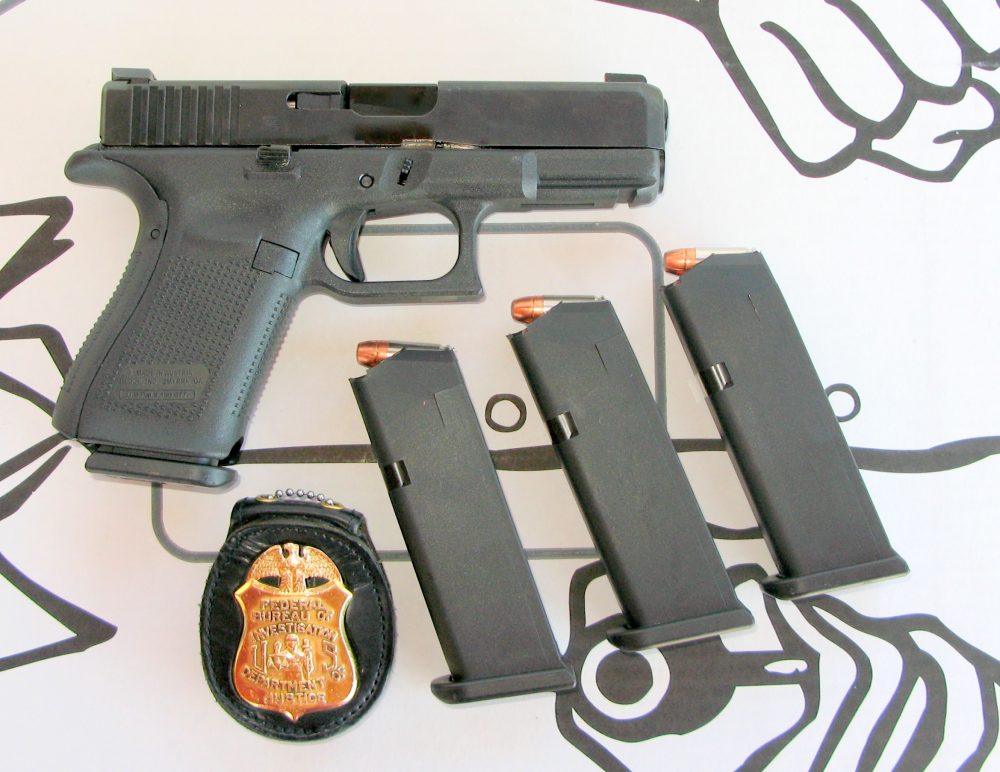
It’s been quite a while since trainer Ken Hackathorn told me why he started to carry and train with a Glock pistol, relegating his iconic 1911 pistol to a backup or secondary role. He simply stated, “Bob, you find the Glock anywhere in the world. It’s ubiquitous.”
Chuck Taylor, another noted trainer and 1911 aficionado, turned to the polymer pioneer quite a few years ago after he conducted some unbelievable round count and torture tests with his piece.
Many other metal pistol mavens have followed suit. There’s obviously a love affair going on between military, police and civilian concealed carry club members with the Austrian-American creation.
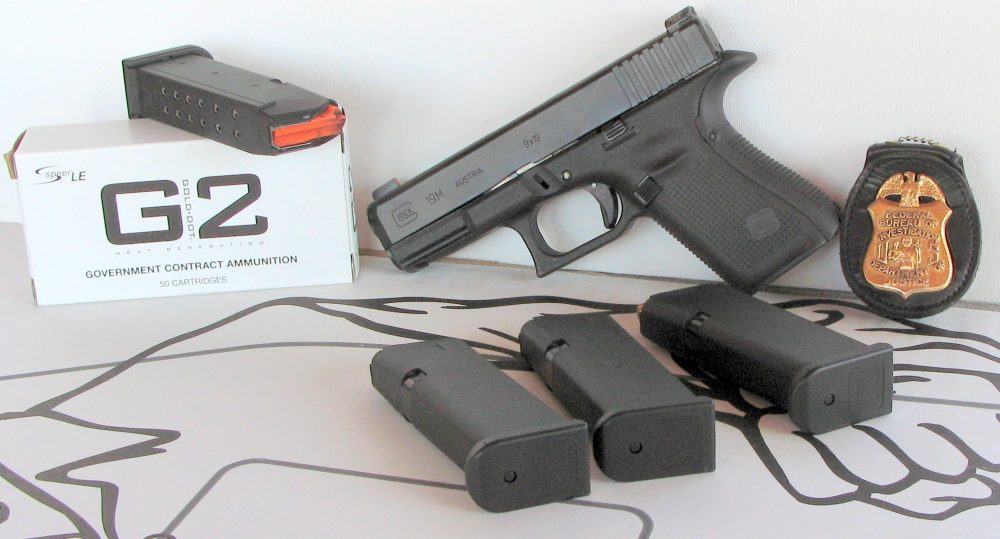
Table of Contents
FBI REJECTION/GLOCK’S RIPOSTE
I can remember when Glock was a dirty word around the FBI, because its simple point-and-shoot attribute was considered unsafe. Firearms Training Unit (FTU) principals published a pamphlet on the “Wonder Nines” that were beginning to proliferate in America and piquing the interest of law enforcement.
These gun gurus condemned one pistol only, and that was Gaston Glock’s Austrian import. Because it had no external safeties to activate, save for its “Safe Action” trigger, the Bureau considered the pistol an accident waiting to happen, and historically there were more than a few negligent discharges.
Rumor had it that Glock was going to sue the FBI over this assertion and others that claimed the plastic gun was a potential “terrorist’s weapon,” because it would not be spotted by metal detectors.
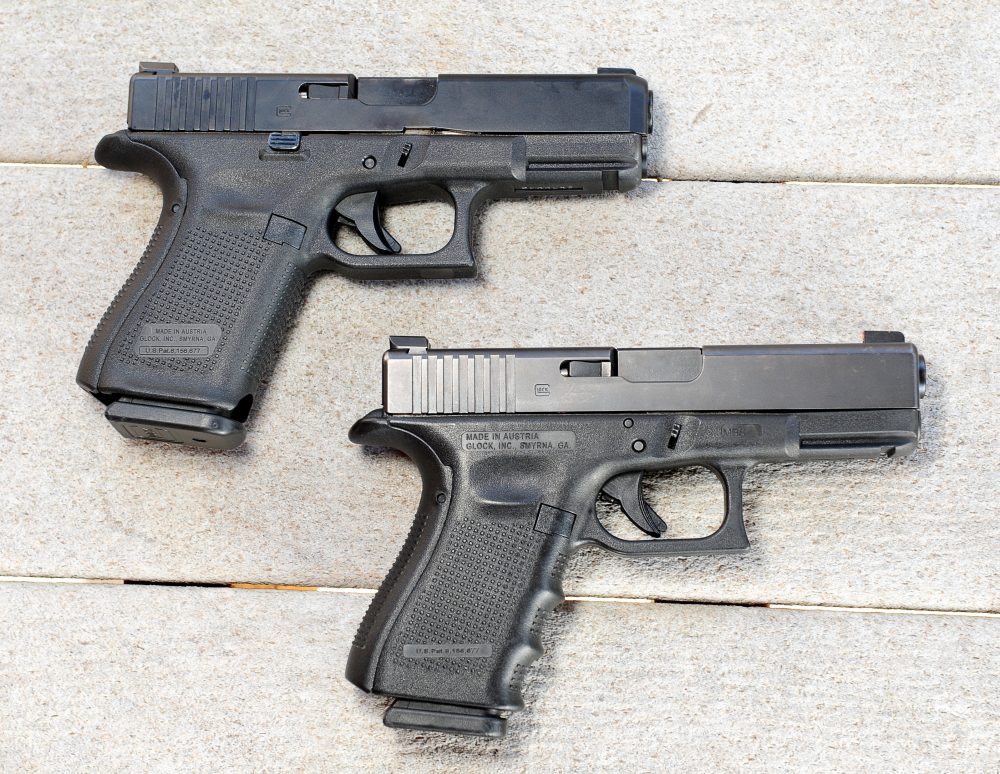
I was contemplating all this flack as I reported to the FBI Academy’s Gun Vault to attend a meeting with the man himself, Mr. Gaston Glock. A highly restricted area, the Gun Vault had room for only a few people, including Mr. Glock and one other company representative. The authors of the FTU pamphlet were not there.
The meeting was devoid of any niceties. Right after we were introduced, Mr. Glock got down to business by breaking down a G17 and pointing out all the internal metal parts that made the gun work and safeties that made it safe and could be seen by metal detectors. This was not a sales pitch, but an effort to clear up any misconceptions.
I tried to interject a little humor when I asked Gaston if the space between the magazine well and backstrap was where they kept their schnapps, but he ignored my joke entirely.
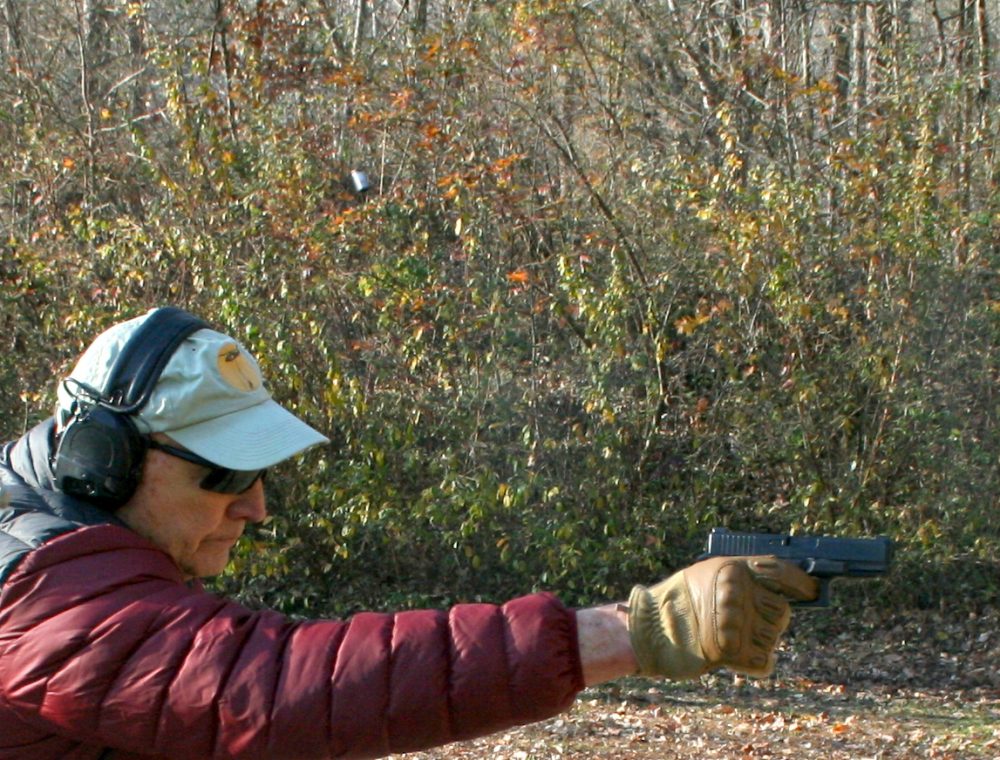
DEA’S GLOCK
When I was loaned to the DEA during the attempted DEA/FBI merger, I was issued a Glock 17. DEA’s firearms unit was co-located with the FBI FTU in a nearby building and was issuing its agents Glocks. They were very happy with them. But there was no serious effort by the FBI to spend time with DEA to find out more about the gun and why it was so popular.
While shooting falling plates at 50 yards with an HRT [Hostage Rescue Team] buddy, I was approached by one of the FTU’s “old ladies.” When he noticed I was firing a Glock, he recoiled in horror, exclaiming that it was “unsafe, unsafe.” He scampered off to tell others about his close encounter with death. With that same G17, I was the first shooter to clean John Shaw’s Mid South’s 20-event standards that he formulated with the help of SEAL and Delta operators who attended his school.
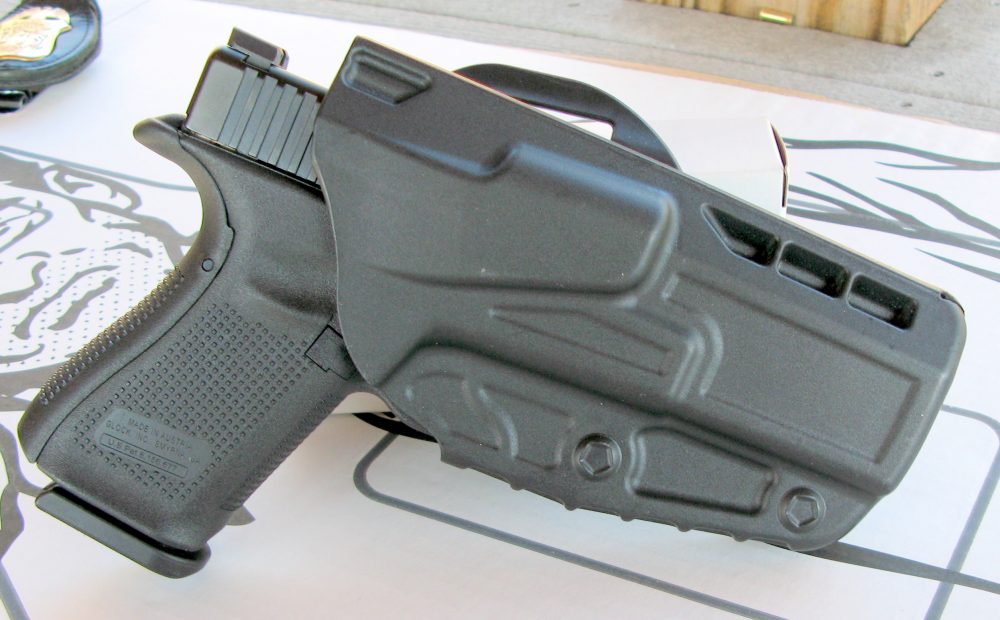
FBI HANDGUN ODYSSEY
Every few years, the FBI looks for a new pistol. I was initially trained with revolvers. When the field SWAT program was transferred to the Special Operations and Research Unit, we acquired the 9mm S&W 459 pistol, while field agents carried the S&W M13 revolver.
The 459 was at the Miami Massacre, and one launched a potentially fatal bullet that lodged near one shooter’s heart, but he ignored the wound and kept on shooting. After much agonizing over the event, S&W was contracted to build the 1076 pistol in 10mm.
The caliber was fine, but the pistol did not work out for the majority of agents. After much discontent, repairs and other tinkering, it continued to be issued until the pistols were removed through attrition. The Sig P226 hi-cap pistol was adopted and was well received in spite of some idiosyncrasies that surfaced later. In addition to 15-round magazines, SWAT team members received a 20-round stick.
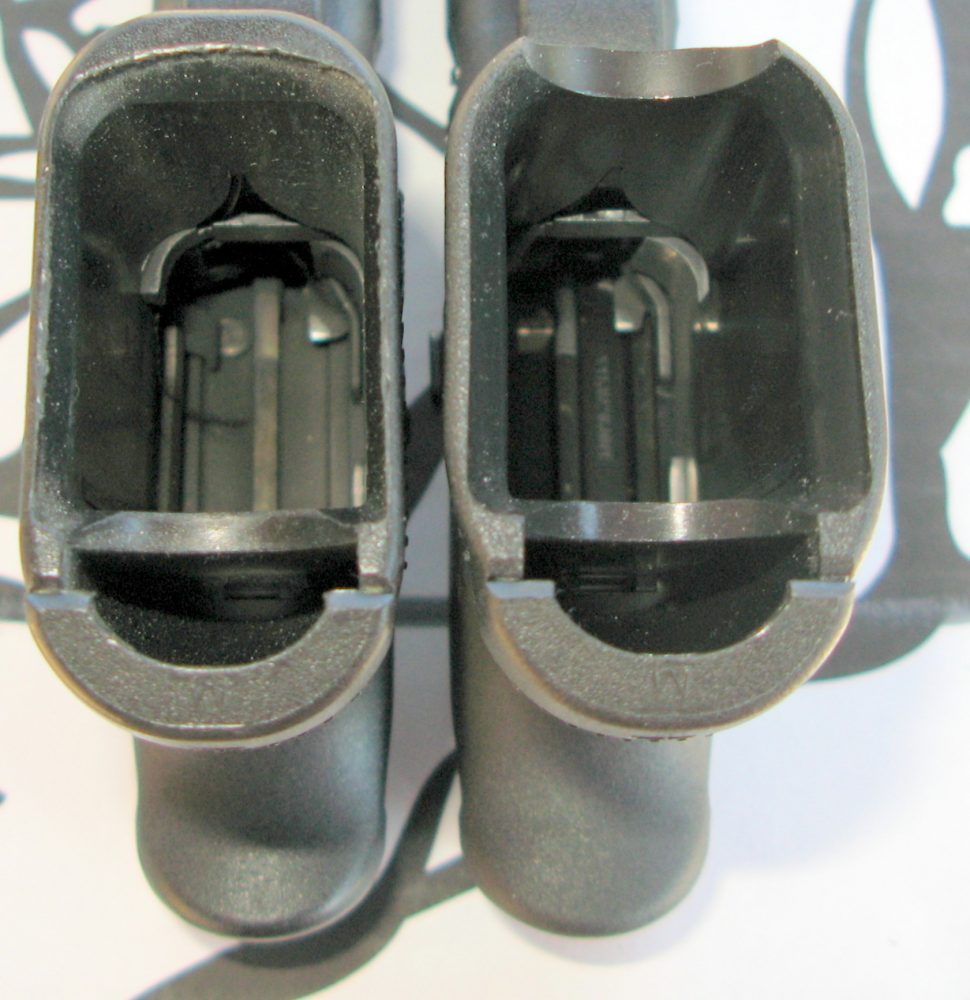
We also switched from a 115-grain bullet to a 147-grain projectile. FBI HRT had their FN Brownings, which they loved, but eventually traded them in for high-capacity .45 ACP 1911s. Reliability problems led to the acquisition of single-stack 1911s, which after a number of years of service are currently being phased out for another pistol.
As an aside, FBI HRT evaluated some high-dollar 1911s in 10mm before settling on the .45 ACP. I was shooting with them with a Glock 20 10mm pistol. Prone at 50 yards, the G20 produced groups as good as the 1911s.
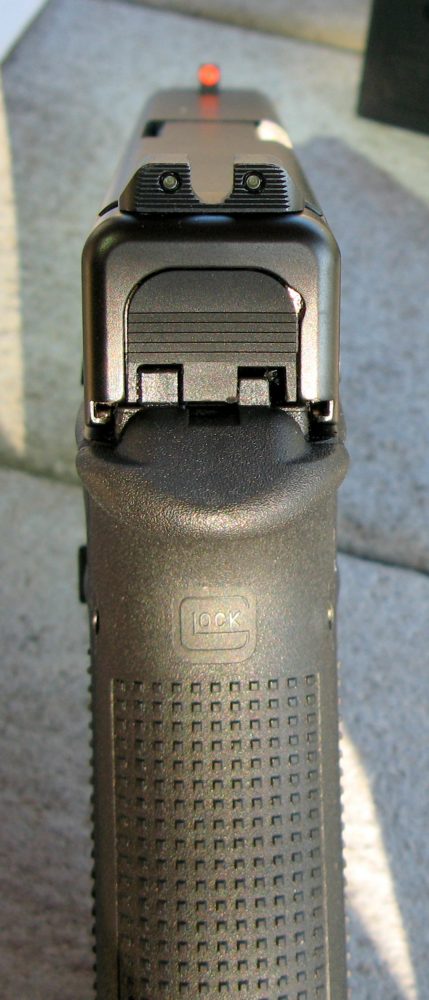
FBI EVOLUTION
After changes in the FTU hierarchy, the FBI “evolved” and adopted the Glock 22/23 in 1998. Up until December 2016, the G23 with finger grooves and rail was the standard issue to field agents.
But with the advent of vastly improved 9x19mm ammunition and the successful testing of the Speer 147-grain G2 Gold Dot JHP, the Bureau decided to return to the nine. In fact, the FBI Defensive Systems Unit considers it the best round they’ve ever tested and favor it over the .40 S&W and .45 ACP.
Besides required penetration through bare gelatin and several urban environmental barriers, it outperformed the other two calibers in FBI criteria. During recent testing for a new handgun, 120,000 rounds of the Speer were fired without one ammunition failure. The FTU also noted that the Parabellum cartridge offers several advantages: less recoil, faster shot-to-shot delivery, more stored stops, and a lighter carry piece.
Private citizens can acquire 50 rounds of G2 ammunition for a tad less than $30. G2 bullet designs are also available in 180-grain .40 S&W and 230-grain .45 ACP.
SURPRISE TESTING OUTCOME
Many were surprised when Glock won the FBI contract, because the FBI RFP (Request for Proposal) appeared to be written for the modular SIG Sauer P320 pistol. The P320 is a fine shooting and highly versatile piece that can be changed to numerous configurations and calibers just by moving the Fire Control Unit from one chassis to another. But three G17s and three G19s surpassed it in the reliability department by expending 20,000 Speer rounds per gun for a total of 120,000 rounds without one stoppage or malfunction.
Preceding completion of the FBI’s testing, SEAL teams and U.S. Special Operations Detachment Delta announced their acquisition of G19s. In addition, the USMC MARSOC and MEUSOC also abandoned its recently acquired Colt 1911 Rail Gun for the G19.
Glock has 65% of the police market and now may have the biggest share of the military market, currently producing 70,000 pistols per week with three shifts. Like McDonald’s, they have sold millions and millions of them. To keep up with new demand, Glock may have to open another plant.
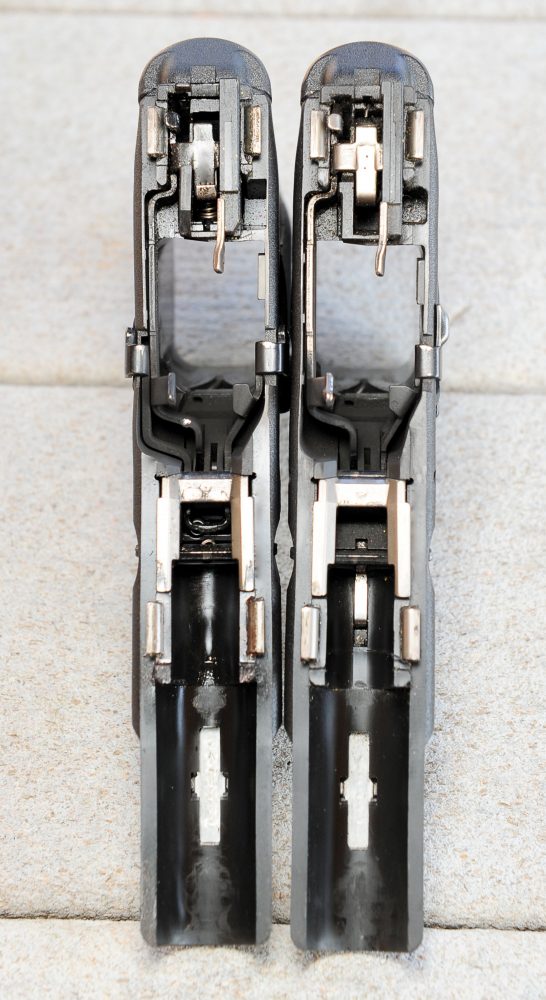
GLOCK 19M
I don’t know if the Glock 19 the military is acquiring is the FBI’s M model. To comply with the FBI RFP, Glock had to provide a full sized and compact pistol, along with training pistols, and had to make some substantial changes to the gun.
I had the good fortune to spend some time with an FBI issue Glock 19M and compare it to a Generation Four pistol. The issue pistol exhibited the following changes and features:
- No front-strap finger grooves
- Conventionally rifled barrel, crowned at the muzzle
- Stronger trigger safety pin
- Enhanced locking block and rails
- Longer recoil spring assembly
- Enhanced ejector
- Improved trigger
- Enhanced firing pin safety and spring
- Ambidextrous slide releases/stops, both shielded
- Stronger slide lock lever spring
- Improved magazine base pads
- Flared magazine well
- Cut-out in grip to facilitate easy removal of stuck magazine
- AmeriGlo sights
- Safariland ALS holster
- Four back straps
- Externals and internals coated with NDLC
- Other upgraded internal parts
A number of federal agencies are eligible to piggyback onto the FBI $85 million contract, so Glock may have an extraordinary number of pistols to deliver. Initial shipments of the M model will come from Austria.
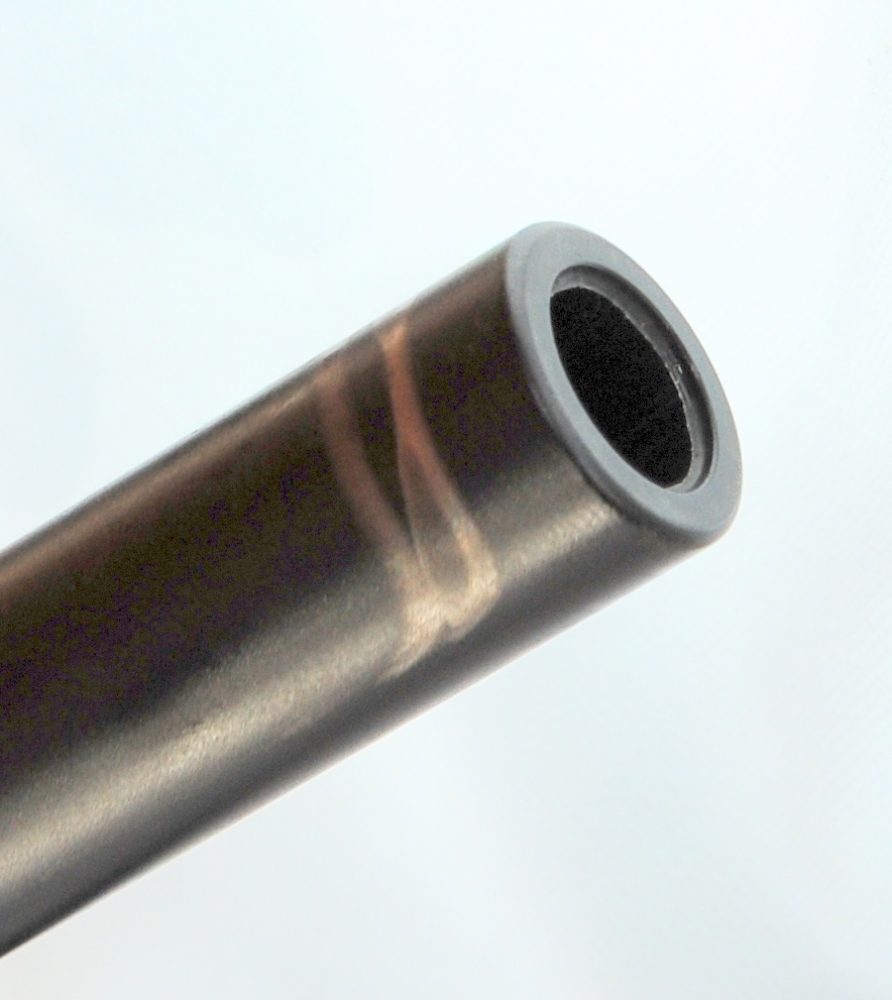
Glock 19M SPECS
The RFP required a trigger weight between 4.5 and 6.0 pounds. The issue pistol’s pull was 4.75 to 5.0 pounds with only 120 rounds through it. The trigger had a short, smooth take-up that broke crisply with no noticeable overtravel.
The G19 Gen 4 pistol had longer pre-travel and some creep when it hit sear resistance. Reset was also better on the M model. I fired three magazines of Speer ammunition through the M model. Trigger response during rapid fire and recoil control were excellent.
The Glock 19M model weighs 22 ounces without magazine—slightly heavier than the G4 at 21.8 ounces. The M model’s go-to-war weight with 16 rounds of 147-grain ammunition is 32.5 ounces, while the G19 Gen 4 weighed 32.1 ounces.
Grip panels have a pebble-grained texture that is not abrasive but is sufficient to provide a good purchase on the weapon when it is dancing from recoil. Front and back straps are checkered. Agents have four different exchangeable back straps to choose from: two medium and two large, with or without a beavertail.
Its hammer-forged 1:9.84 twist barrel is “conventionally” rifled, but is reportedly a “Polygonal Hybrid.” Its polygonal barrel has a groove in it, which is supposed to result in better accuracy. Perhaps another reason for the change is to give the agents deploying overseas the option to fire lead bullets if that’s the only ammo available. The M model’s muzzle is crowned, again for improved accuracy.
Bi-lateral slide releases/stops adorn the M and are shielded from inadvertent engagement by raised frame projections. Left-handed agents are not ignored. The Safariland holster has to be modified to accommodate the dual slide releases/stops, which the company has agreed to do.
Internal upgrades consist of a ¼-inch longer dual recoil spring that mates with an improved notch on the barrel’s lug. The firing pin safety has been reshaped from oval to square and is alleged to have been improved.
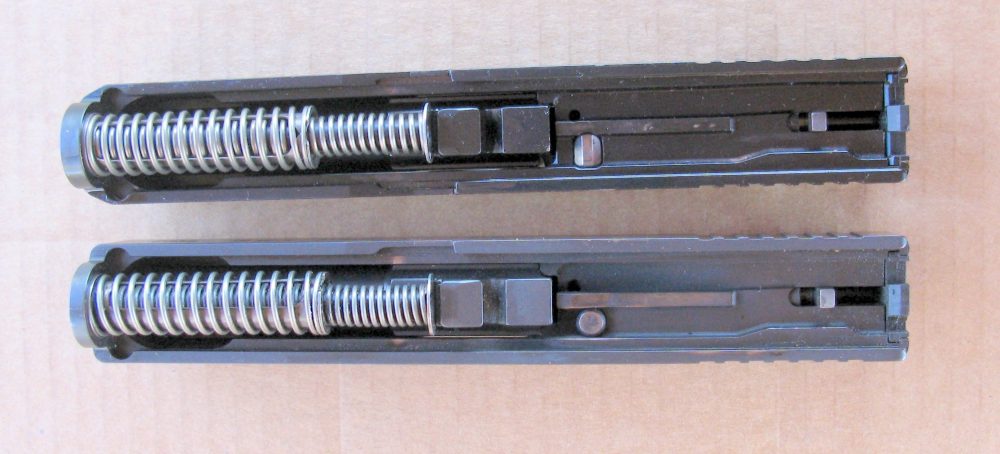
Slide and internal parts are coated and “cloaked” with state-of-the-art Nitrogen Doped Diamond-Like Carbon (NDLC). Tennifer, previously used by Glock, is a metal treatment, whereas NDLC is a metal coating. Three springs essential for pistol operation have been improved and can endure 10,000 rounds before being replaced.
Four 15-round magazines with orange followers and larger base pads are issued to each agent, giving them a 61-round carry potential. The larger base pads facilitate stripping and inserting magazines. This belt load of ammunition is a quantum leap in capability when compared to the 12 rounds I carried when armed with an S&W M19 revolver.
Glock 19M AND Glock 19 GEN 4 COMPARISONS
Polygonal rifling has the reputation of creating a better seal and, ergo, higher velocities than conventionally rifled barrels. There are so-called fast and slow barrels, and when Ray Chapman at his Chapman Academy let us chronograph our Brownings and Glock 17s, the Glocks were noticeably faster.
I wanted to do the same and compare the M model’s barrel with that of the Gen Four’s barrel for velocity and accuracy. Even though the day was bitterly cold, with wind chill in the 20s and numb fingers protesting, both 19s shot and handled well. Furthermore, in the gusts, I got tighter five-round groups shooting standing off hand with a two-handed grip than from a bench rest at 25 yards.
Groups of 1.64 and 2.19 inches were obtained from the Gen 4 G19 and G19M respectively. A high individual muzzle velocity of 1,016 feet-per-second (fps) was delivered by the Gen 4 G19 with the Speer G2 147-grain round. Average velocity for a five-round string was 969.6 fps, and Standard Deviation was 26.8.
The M model pitched a high individual velocity of 989.0 fps and an average velocity of 951.4 fps. Standard deviation was 26.6.
Although ballisticians have stated that lower velocities with the same bullet often result in less expansion but deeper penetration, which is one of the most important factors in bullet performance for the FBI, the difference in velocities between the two pistols should produce insignificant differences in terminal performance.
Even though the Gen 4 G19 demonstrated slightly better performance in the accuracy and velocity departments, the two pistols are nearly identical in those two categories.
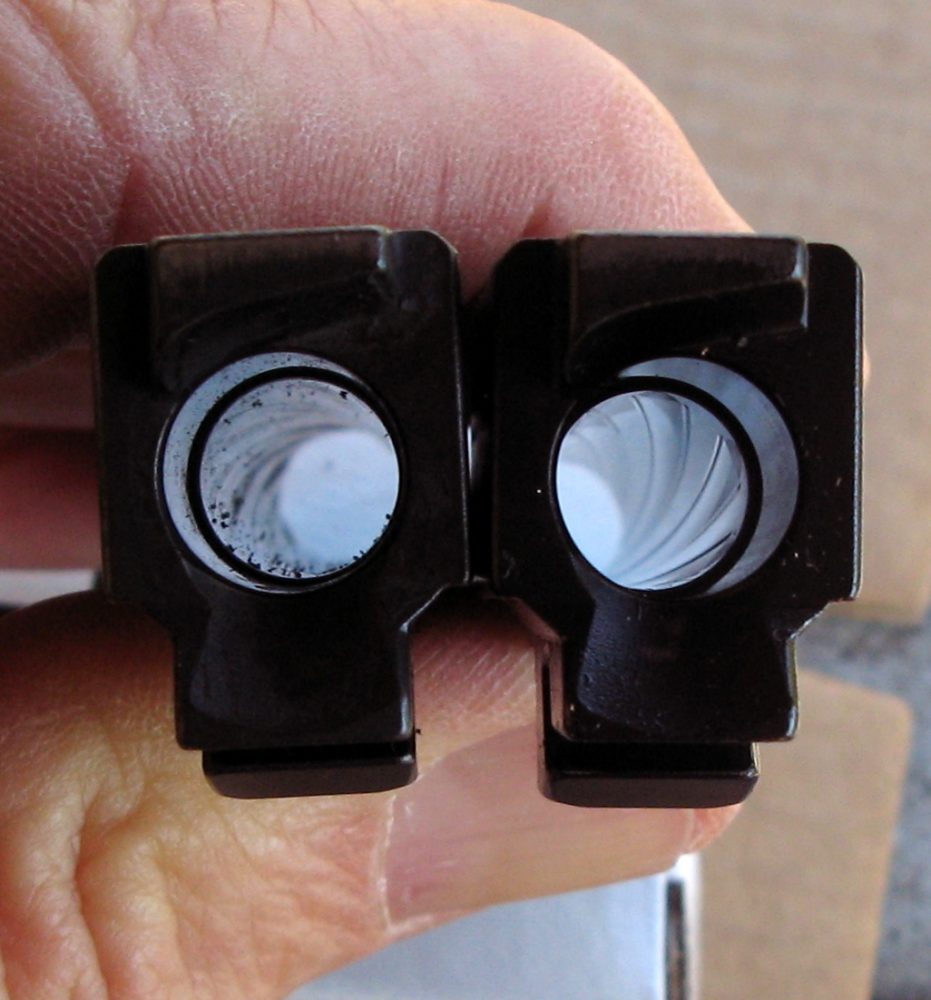
TEETHING PROBLEMS
Some early teething problems have been reported by a mid-western police department, and their G17Ms had to be recalled. It was reported that during dry firing, some of the pistols’ slides separated from the receiver. It is not uncommon for new pistols to exhibit “birthing” problems in the hands of end users after they live with the firearm for a while. Glock, like other major manufacturers, usually corrects the problem quickly.
No problems of any significance have been reported by the FBI regarding the Glock 19M.
CONCLUSIONS
In the eyes of the beholding shooter, Glocks are either loved or hated, considered ugly or functionally beautiful. But nevertheless, after a rocky American start and gradual acceptance by the shooting communities, Glock has won the hearts and minds of the armed masses.
Glock pistols are considered the AK of the handgun world. They are often better than “combat accurate” and have considerable capacity and recoil-absorbing qualities, making them excellent fighting pistols. But their most endearing quality has been down-and-dirty reliability, making them the choice of gunfighters in the know. And they’re affordable.
Many excellent polymer pistols are on the market. Most of them have capitalized on Glock’s innovations and “improved” upon them. Imitation is the sincerest form of flattery, but the fact that the G19 and its full-sized sibling are now the choices of Tier One national counter-terrorist team assets makes it a no–brainer for me.
SOURCES
GLOCK, INC.
(770) 432-1202
www.glock.com
AMERIGLO
(470) 223-4163
www.ameriglo.com
SAFARILAND
(800) 347-1200
www.safariland.com
SPEER AMMO
(800) 379-1732
www.speer-ammo.com


